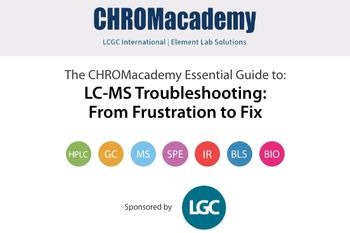
Separations on Small Volume Samples
Separation-based analysis of minute specimens including tissues, clinical fluids, or single cells requires novel miniaturized front-end approaches suitable for the quantity of starting material. This symposium will focus on systems to address this challenge.
This Tuesday afternoon session offers insight into advances in separation on small volume samples. Included are discussions on liquid chromatography–mass spectrometry (LC–MS) for small sample bioanalysis, analysis methods for non-invasive body fluids analyses, the use of capillary nanogel electrophoresis for microscale processing and sequencing, and more.
Leading this session at 1:30 pm is Ryan Kelly of Brigham Young University, who will speak about pushing LC–MS to its limits for small sample bioanalysis. Although LC–MS-based proteomic analyses are capable of quantifying thousands of proteins, the extension to single-cell studies has been largely ineffective. Kelly’s talk will focus on developing separations to maximize proteome coverage at and near the single-cell level.
Scott Shippy of the University of Illinois at Chicago will speak next, from 1:30–2:05 pm, discussing the development of tear collection and analysis methods for non-invasive body fluid analysis. The use of a thread-based absorptive tear collection has been studied to assess its potential for accessing physiologically relevant tear chemical content. Shippy’s work points to the ability to collect, manipulate, and assay sub microliter volumes of tears that can have important implications for understanding and monitoring human health.
Next, from 2:40–3:15 pm, Lisa Holland of West Virginia University will offer insight into microscale processing and sequencing using capillary nanogel electrophoresis. Holland will describe how a rapid, inexpensive, and automated method successfully quantified N-linked glycans and is suitable to distinguish differences protein post-translational modifications and how this new approach integrates lectin and exoglycosidase-based analyses of N-glycan structures.
From 3:30–4:05 pm, Jared Anderson ofIowa State University will discuss new strategies for high-throughput nucleic acid analysis. The talk will focus on the design and synthesis of ionic liquids, magnetic ionic liquids, and polymeric ionic liquids as well as the use of these materials in a number of applications for the analysis of nucleic acids.
The final talk, from 4:05–4:40 pm, will be provided by Adam Woolley of Brigham Young University. The presentation will explore on-chip preconcentration and fluorescent labeling of proteins and peptides on porous polymer monoliths in 3D printed microfluidic devices and the successful demonstration of retention, fluorescent labeling, removal of unattached taggant, and selective elution of nine analytes.
Link to the full session:
Newsletter
Join the global community of analytical scientists who trust LCGC for insights on the latest techniques, trends, and expert solutions in chromatography.





